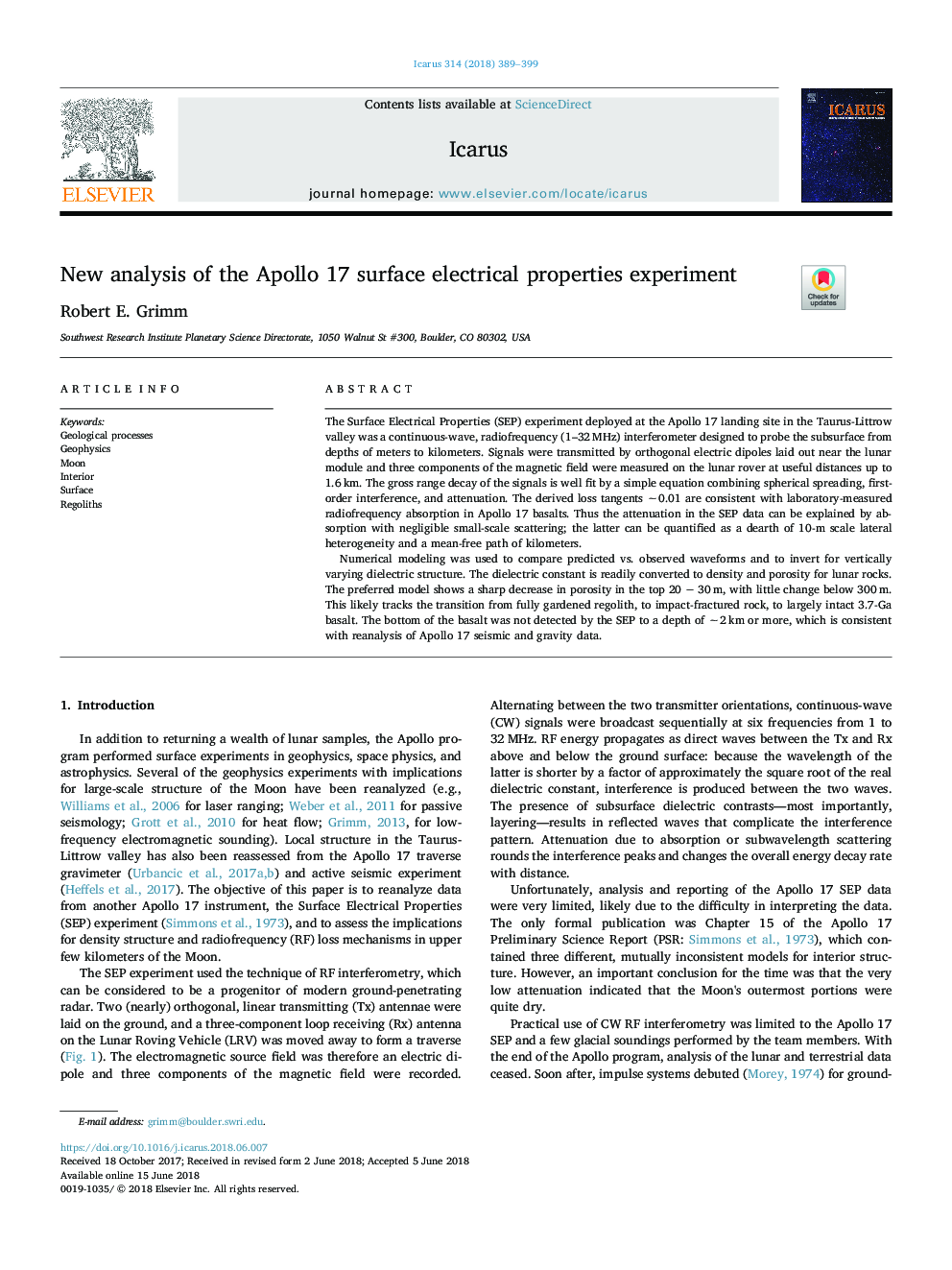| Article ID | Journal | Published Year | Pages | File Type |
|---|---|---|---|---|
| 8133900 | Icarus | 2018 | 11 Pages |
Abstract
Numerical modeling was used to compare predicted vs. observed waveforms and to invert for vertically varying dielectric structure. The dielectric constant is readily converted to density and porosity for lunar rocks. The preferred model shows a sharp decrease in porosity in the top 20â¯ââ¯30â¯m, with little change below 300â¯m. This likely tracks the transition from fully gardened regolith, to impact-fractured rock, to largely intact 3.7-Ga basalt. The bottom of the basalt was not detected by the SEP to a depth of â¼2â¯km or more, which is consistent with reanalysis of Apollo 17 seismic and gravity data.
Related Topics
Physical Sciences and Engineering
Earth and Planetary Sciences
Space and Planetary Science
Authors
Robert E. Grimm,
